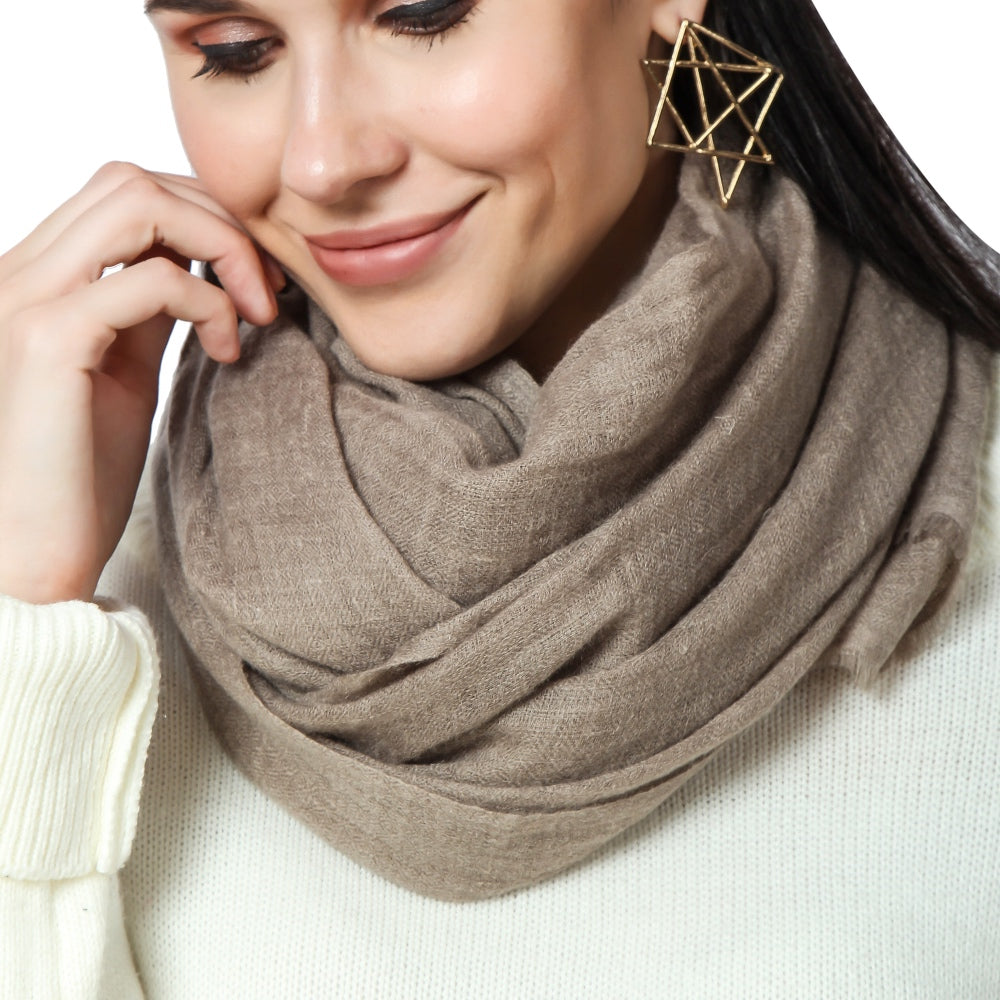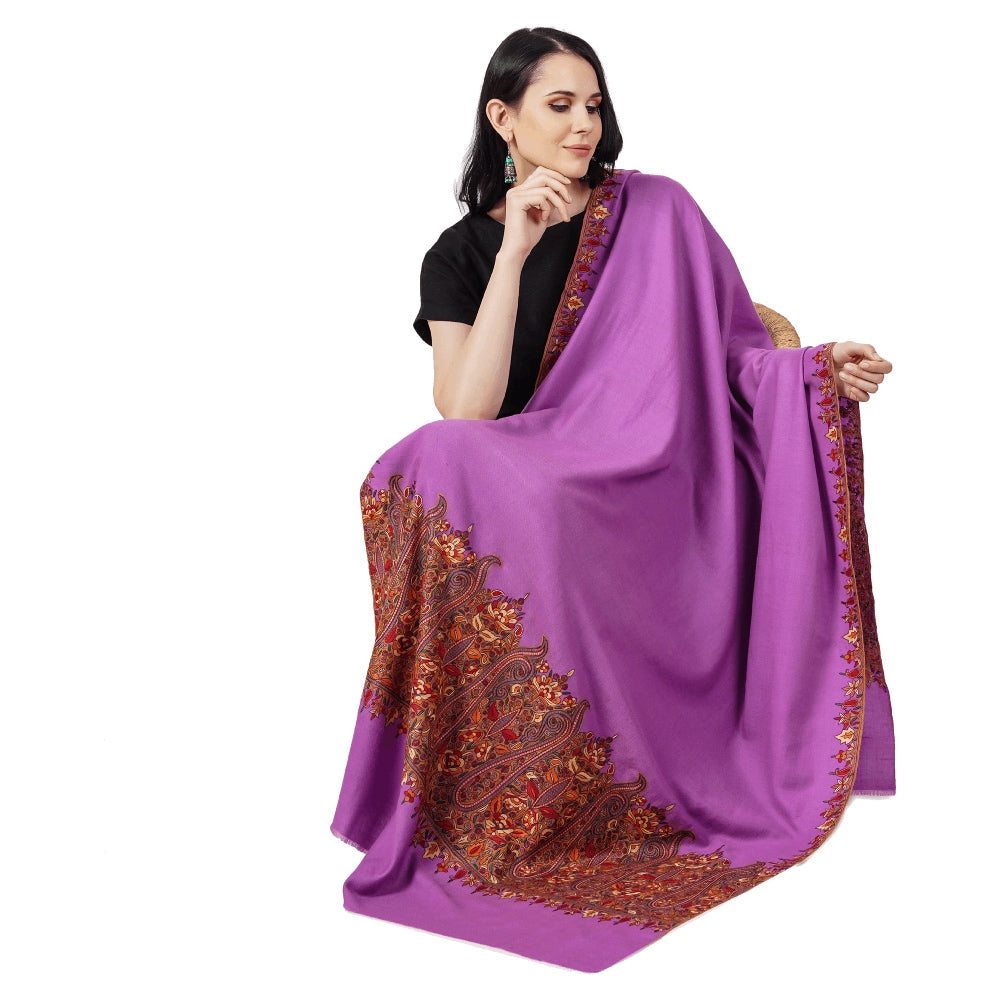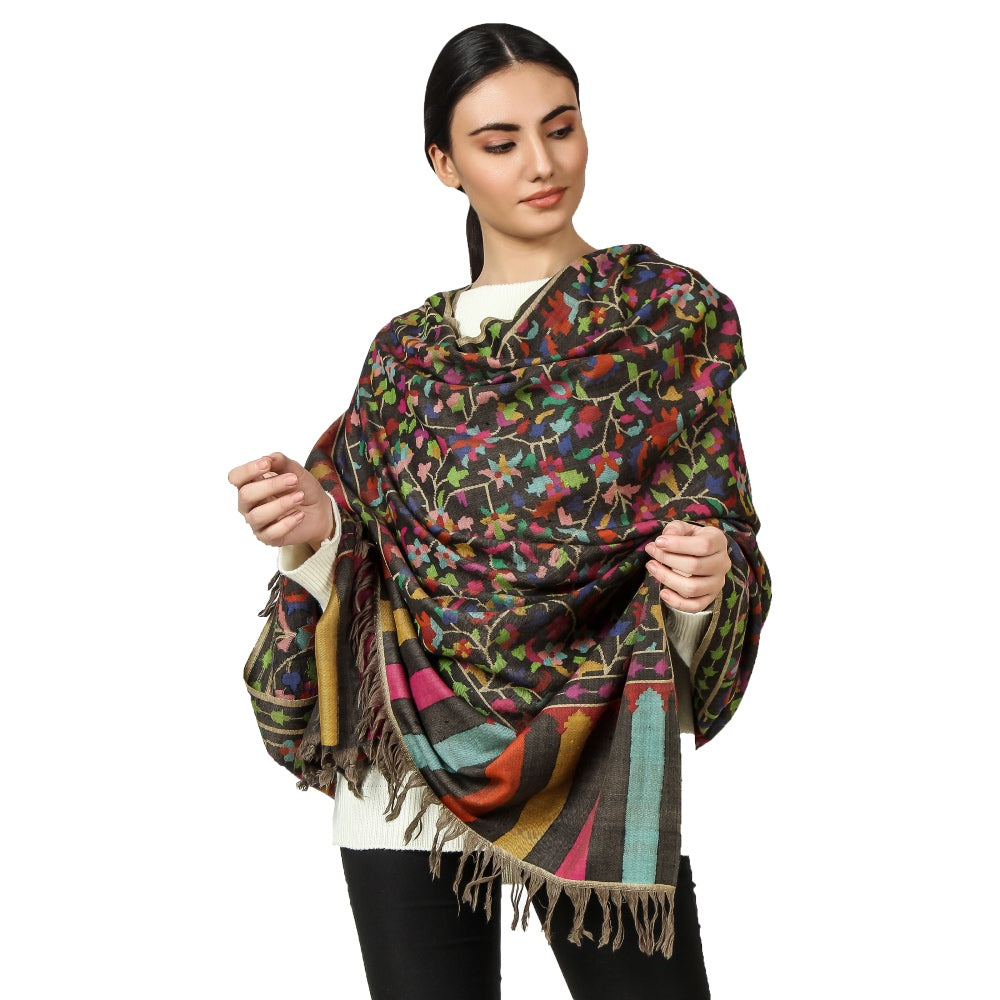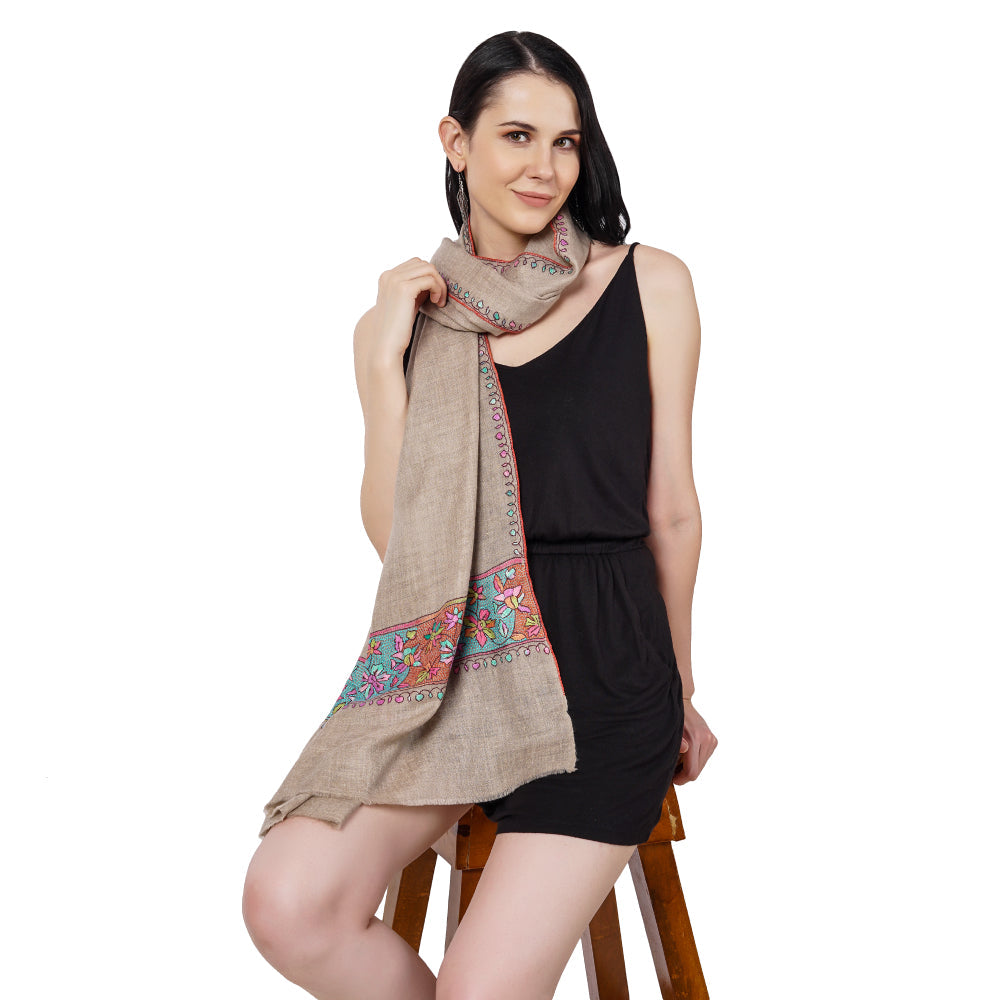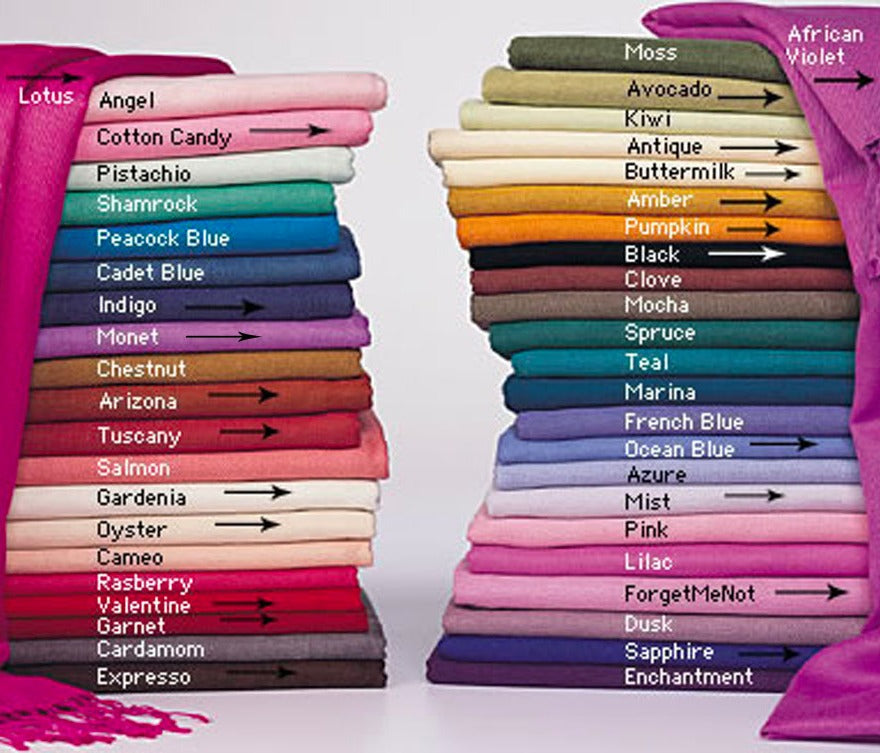
What Color is Pashmina?
Share
Pashmina, a luxurious and sought-after fabric, is known for its exquisite softness and warmth. But when it comes to color, what options does this exquisite material offer? In this article, we will explore the diverse range of colors found in Pashmina, from its natural shades to the art of dyeing and the popular hues in the world of Pashmina fashion. So let's dive into the colorful world of Pashmina.
Pashmina, derived from the Persian word "pashm," meaning "soft gold," is a type of fine cashmere wool renowned for its exceptional quality and warmth. Originating from the high-altitude regions of the Himalayas, Pashmina has been treasured for centuries due to its luxurious texture and incredible insulation properties. While Pashmina is often associated with its iconic creamy white color, it actually comes in a wide array of shades.

The Origin and Meaning of Pashmina
Before delving into the colors of Pashmina, it's worth exploring its origin and the cultural significance it holds. Pashmina wool is sourced from the underbelly and neck region of the Capra hircus goat, also known as the Changthangi goat, found in the Himalayan regions of India,These goats have adapted to the extreme weather conditions, developing a soft and warm undercoat to protect them from the freezing temperatures.
The name "Pashmina" has become synonymous with luxury and opulence. Pashmina shawls and scarves have been treasured for centuries, with their intricate weaves and delicate patterns symbolizing elegance and refinement. Today, Pashmina products are highly coveted worldwide for their timeless beauty and exceptional craftsmanship.
The Natural Colors of Pashmina
Pashmina fibers possess inherent colors that reflect the natural tones of the Changthangi goat's undercoat. Let's explore the various shades that can be found in pure, unadulterated Pashmina:
Shades of White and Ivory
The most traditional and iconic color of Pashmina is the classic creamy white, resembling the purity of freshly fallen snow. It exudes elegance and sophistication, making it a popular choice for formal occasions and bridal wear. Alongside white, Pashmina can also feature beautiful ivory shades, lending a touch of warmth to its appearance.
Earthy Tones: Beige, Brown, and Tan
Pashmina fibers can naturally occur in earthy hues, ranging from soft beiges to rich browns and warm tans. These earthy tones harmonize well with various outfits and add a touch of organic beauty to the wearer. They are ideal for both casual and formal occasions, offering a versatile color palette.
Soft Pastels: Pink, Blue, and Green
In addition to neutrals and earthy tones, Pashmina can also be found in gentle pastel shades. Delicate pinks, soothing blues, and soft greens bring a subtle touch of color to Pashmina accessories, perfect for adding a hint of femininity and freshness to any ensemble.
Vibrant Hues: Red, Purple, and Orange
For those seeking a bolder statement, Pashmina can also be dyed in vibrant hues. Fiery reds, regal purples, and lively oranges infuse a sense of passion and energy into Pashmina products. These eye-catching colors make a strong fashion statement and are particularly popular during festive occasions and celebrations.
Dyeing Pashmina: Traditional and Modern Methods
While natural colors are beautiful, the versatility of Pashmina extends to the art of dyeing. Let's explore the traditional and modern techniques used to infuse Pashmina with a spectrum of captivating colors.
Natural Dyeing Techniques
Traditionally, Pashmina was dyed using natural substances derived from plants, roots, flowers, and insects. These organic dyes produced a range of beautiful and subtle colors. Natural dyeing techniques are still practiced today, honoring ancient traditions and ensuring eco-friendly production methods.
Synthetic Dyeing Techniques
In modern times, synthetic dyes have gained popularity due to their wide range of vibrant and long-lasting colors. Synthetic dyes offer endless possibilities for creating bold and striking Pashmina shades, catering to diverse fashion trends and personal preferences.
Popular Colors in Pashmina Fashion
Now that we've explored the natural and dyed colors of Pashmina, let's take a look at some of the popular hues that dominate the world of Pashmina fashion.
Classic Neutrals: Black and Gray
Black and gray Pashmina products are timeless essentials that effortlessly complement any outfit. These classic neutrals exude sophistication and lend an air of understated elegance, making them versatile choices for both formal and casual occasions.
Timeless Elegance: Navy and Burgundy
Navy and burgundy are deep, rich colors that add a touch of luxury and timeless elegance to Pashmina accessories. These shades are particularly popular during the colder seasons and are often associated with refinement and sophistication.
Versatile Options: Cream and Camel
Cream and camel tones offer a balance between neutrality and warmth. These versatile colors blend seamlessly with a wide range of outfits and are perfect for everyday wear. Cream and camel Pashmina pieces are cherished for their ability to enhance any look with a touch of effortless grace.
Trendy Tones: Blush and Sage
For those seeking trendy and fashionable colors, blush and sage have gained significant popularity in recent years. Blush tones offer a delicate and feminine touch, while sage brings a soothing and earthy vibe. These contemporary hues breathe new life into Pashmina accessories, making them a perfect choice for those who wish to stay up-to-date with the latest fashion trends.
Factors Affecting Pashmina Color Selection
When choosing a Pashmina color, several factors come into play, allowing individuals to select the perfect shade to suit their preferences, occasions, and personal style.
Skin Tone and Personal Preference
One essential consideration when choosing a Pashmina color is your skin tone. Different colors can complement or clash with various skin undertones, so it's important to select shades that enhance your natural complexion and bring out your best features. Personal preference also plays a significant role, as colors can evoke emotions and reflect individual style.
Occasion and Season
The occasion and season also influence Pashmina color selection. For formal events, classic neutrals or rich jewel tones are often favored, while casual outings offer more room for experimentation with vibrant or pastel hues. Additionally, the season can inspire color choices, with warm tones for autumn and winter and lighter shades for spring and summer.
Caring for Colored Pashmina
To ensure the longevity and vibrancy of colored Pashmina, proper care is essential. Follow these guidelines to keep your Pashmina looking its best:
Washing and Drying Guidelines
When washing colored Pashmina, it is recommended to hand wash it in cold water using a mild detergent or shampoo. Avoid rubbing or wringing the fabric and instead gently squeeze out excess water. Lay the Pashmina flat on a clean towel to air dry, away from direct sunlight or heat sources.
Avoiding Color Fading
To prevent color fading, it's advisable to store your Pashmina away from sunlight and artificial lighting when not in use. Direct exposure to sunlight can cause colors to fade over time. Additionally, avoid using harsh chemicals or bleach that could damage the fabric and affect the color quality.
Conclusion
In conclusion, Pashmina offers a wide range of colors to suit every taste and occasion. From its natural shades of white, beige, and brown to vibrant hues achieved through traditional and modern dyeing techniques, Pashmina allows individuals to express their style and embrace the beauty of color. By considering factors such as skin tone, personal preference, and the occasion, one can choose the perfect Pashmina color to enhance their wardrobe and make a lasting impression.
FAQs
-
Are there any color limitations when dyeing Pashmina?
While Pashmina can be dyed in various shades, it's important to note that the original color and quality of the fiber can influence the final outcome. Additionally, certain natural colors might require additional steps or different dyeing techniques to achieve the desired shade. -
How do I choose the right color of Pashmina for my skin tone? When selecting a Pashmina color, consider your skin tone and undertones. Cooler skin tones tend to complement jewel tones, blues, and purples, while warmer skin tones pair well with earthy tones, pinks, and oranges. It's always a good idea to try different colors against your skin to see which ones enhance your complexion.
-
Can Pashmina colors fade over time?
With proper care, Pashmina colors can retain their vibrancy for a long time. However, exposure to sunlight, harsh chemicals, or incorrect washing techniques can cause colors to fade gradually. To preserve the colors, follow the recommended care guidelines and store your Pashmina away from direct sunlight. -
Is it possible to customize the color of a Pashmina?
Yes, some Pashmina manufacturers and artisans offer customization options, allowing you to choose specific colors or even create unique patterns. Customizing the color of your Pashmina ensures a one-of-a-kind piece that perfectly matches your preferences and style. -
What colors are popular for Pashmina accessories?
Popular colors for Pashmina accessories can vary depending on fashion trends and personal preferences. Classic neutrals like black, gray, cream, and camel are timeless choices, while deeper shades like navy and burgundy exude elegance. Blush and sage have also gained popularity as trendy options for those seeking a contemporary touch.

